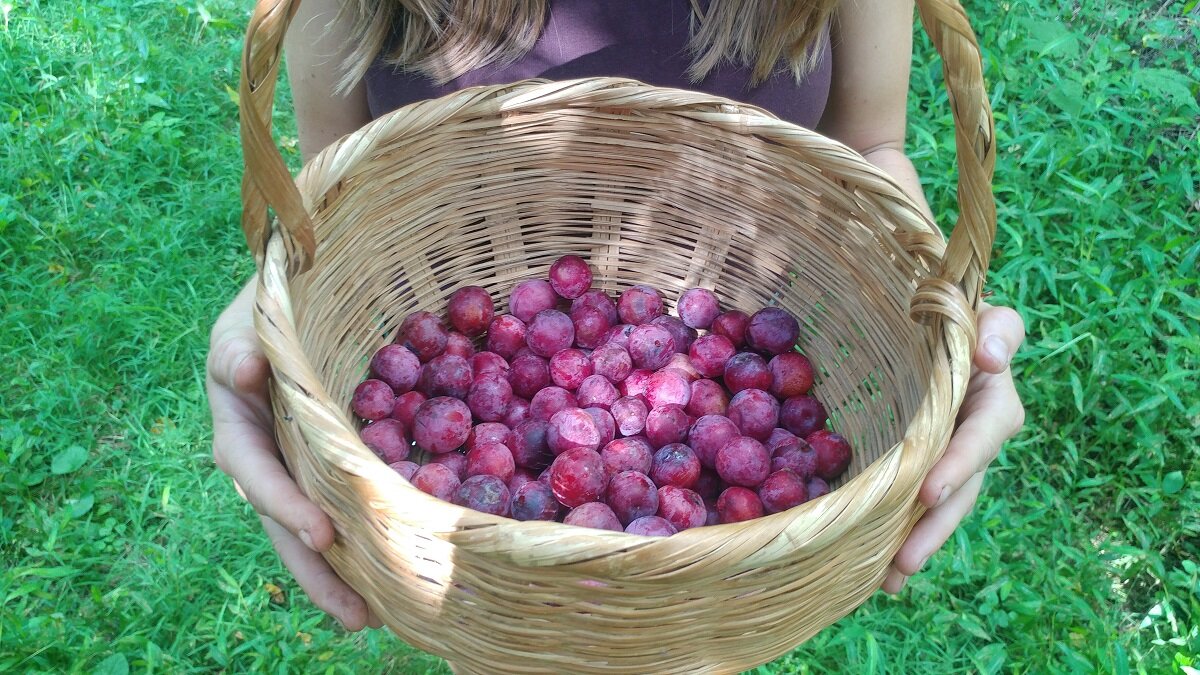 Image 1 of 1
Image 1 of 1


Native Plums: Beach plums, American plums, Goose, Chickasaw...
Stone fruits are an abundant category of plants, especially throughout the northern hemispheres. Here in eastern North America we have several species of native plum:
Prunus nigra - the Canada plum. These grow throughout the northeast and Great Lakes regions. Fruit size and color similar to P. americana and P. munsoniana, often a combination of red and yellow. Forms a small tree up to about 20’ tall, spreading by root suckers.
Prunus americana - the classic American plum. These grow from the Gulf all the way up to Canada, and west to the Rockies. Fruit size and color variable from purple, to red, to yellow, and sometimes pink. Generally purple skin with a white bloom. The skin is sour but the flesh is peach colored and sweet. About the size of a quarter up to about a ping pong ball. Forms a small tree up to about 16’ tall, spreading by root suckers.
Prunus munsoniana - the wild goose plum. These have a home range in the lower midwest. Fruits are similar to P. americana but often larger, generally bright red with no bloom when ripe, or a mottled mix of red and yellow. Texture is firmer and skin less sour. Forms a small tree up to about 12-16’ tall, spreading by root suckers.
Prunus angustifolia - the Chickasaw plum. These are found throughout the southeast and fruits range from red to yellow, and sometimes other combinations. Plums are very sweet. Forms a shrub up to 6-9’ tall, spreading by root suckers.
Prunus maritima - the beach plum. These grow along the east coast from Virginia north to New Brunswick and Nova Scotia. Makes a small plum, generally dark purple, but sometimes yellow or orange, often with a bloom. Has a sweet flavor, and makes an excellent jam. Forms a shrub up to about 6-9’ tall, spreading by root suckers.
In order to get fruit, like pawpaw, you’ll need to have at least two trees for cross-pollination. Generally all the species above have a similar bloom time and will cross-pollinate each other without difficulty. They can be precocious bearers, so expect flowers and fruit in about 4 years. Because of their suckering habit, you’ll either want to be able to let them go so they can form a thicket, or plan to mow around them to keep their spread in check.
These bareroot seedlings are about 12-36” tall.
Stone fruits are an abundant category of plants, especially throughout the northern hemispheres. Here in eastern North America we have several species of native plum:
Prunus nigra - the Canada plum. These grow throughout the northeast and Great Lakes regions. Fruit size and color similar to P. americana and P. munsoniana, often a combination of red and yellow. Forms a small tree up to about 20’ tall, spreading by root suckers.
Prunus americana - the classic American plum. These grow from the Gulf all the way up to Canada, and west to the Rockies. Fruit size and color variable from purple, to red, to yellow, and sometimes pink. Generally purple skin with a white bloom. The skin is sour but the flesh is peach colored and sweet. About the size of a quarter up to about a ping pong ball. Forms a small tree up to about 16’ tall, spreading by root suckers.
Prunus munsoniana - the wild goose plum. These have a home range in the lower midwest. Fruits are similar to P. americana but often larger, generally bright red with no bloom when ripe, or a mottled mix of red and yellow. Texture is firmer and skin less sour. Forms a small tree up to about 12-16’ tall, spreading by root suckers.
Prunus angustifolia - the Chickasaw plum. These are found throughout the southeast and fruits range from red to yellow, and sometimes other combinations. Plums are very sweet. Forms a shrub up to 6-9’ tall, spreading by root suckers.
Prunus maritima - the beach plum. These grow along the east coast from Virginia north to New Brunswick and Nova Scotia. Makes a small plum, generally dark purple, but sometimes yellow or orange, often with a bloom. Has a sweet flavor, and makes an excellent jam. Forms a shrub up to about 6-9’ tall, spreading by root suckers.
In order to get fruit, like pawpaw, you’ll need to have at least two trees for cross-pollination. Generally all the species above have a similar bloom time and will cross-pollinate each other without difficulty. They can be precocious bearers, so expect flowers and fruit in about 4 years. Because of their suckering habit, you’ll either want to be able to let them go so they can form a thicket, or plan to mow around them to keep their spread in check.
These bareroot seedlings are about 12-36” tall.